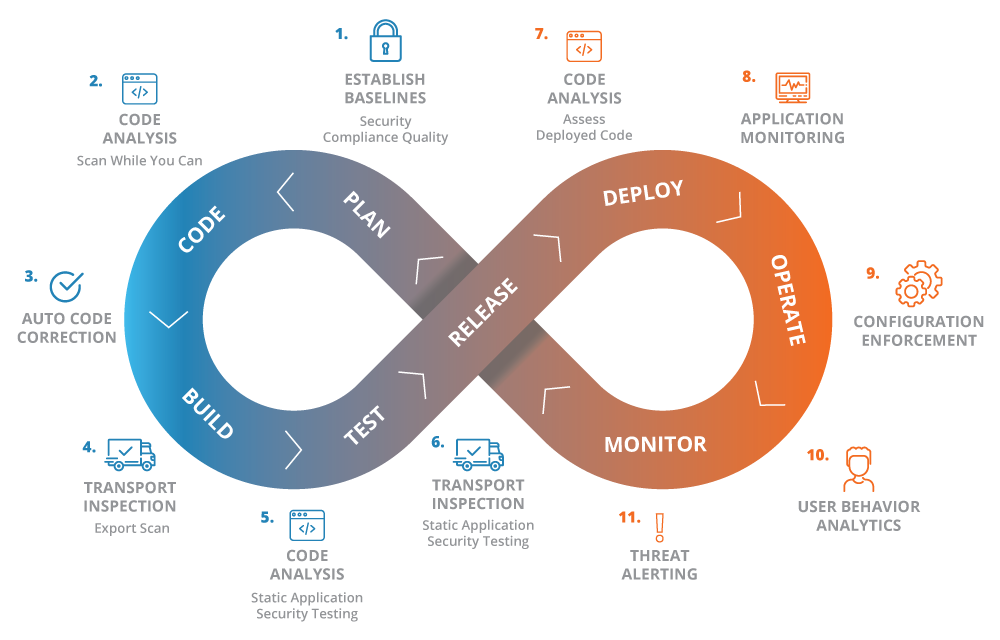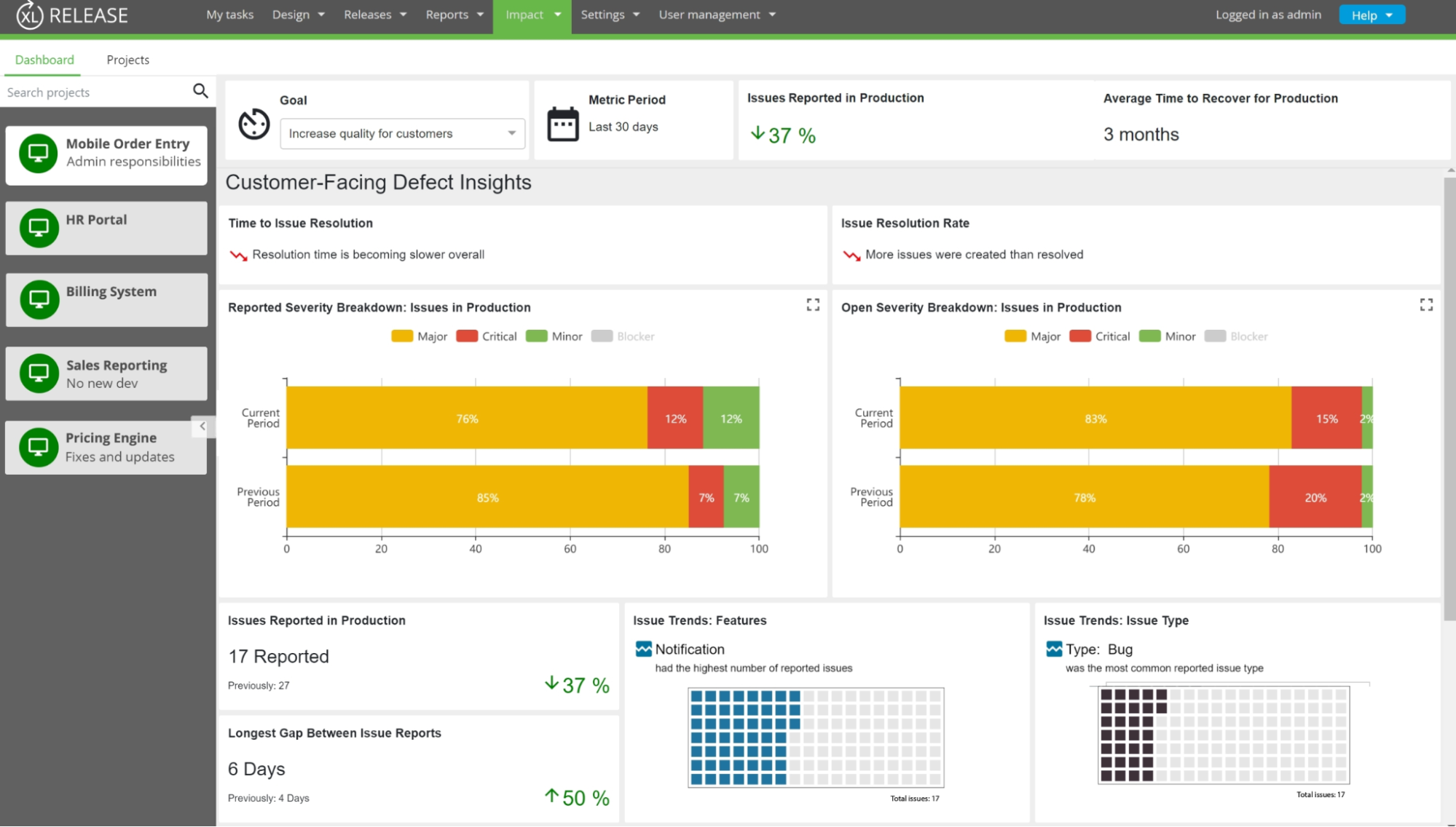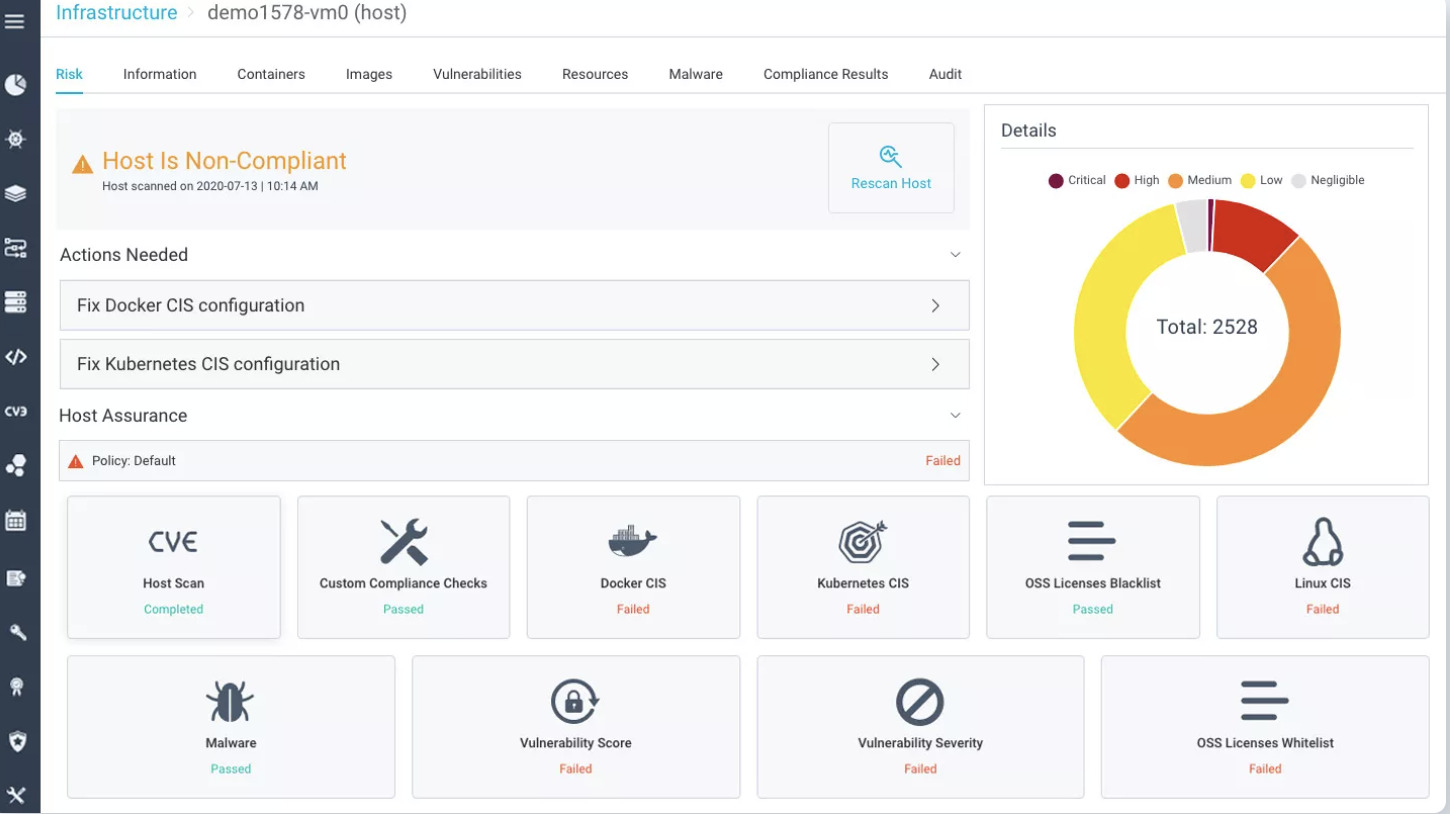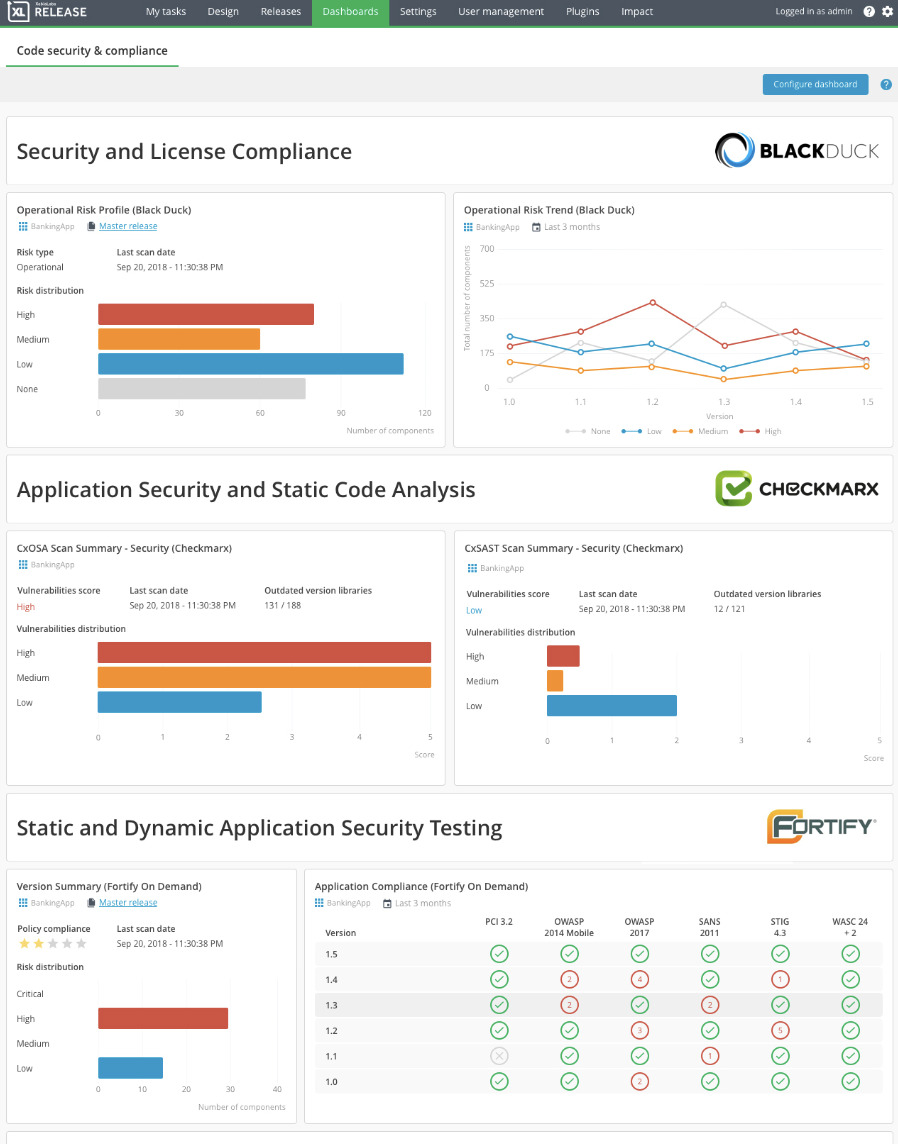- DevSecOps tools are designed to integrate security into the development process, making it easier to identify and address potential vulnerabilities.
- In this article, we compare Aqua Security and XebiaLabs to help you make an informed decision.
- We’ll closely examine their features, strengths, and weaknesses so that you can choose the right tool for your team.
What Is a DevSecOps Tool?
A DevSecOps tool is defined as software that is an extension of the DevOps model where code scanning, security design reviews, software security monitoring, and verification are executed earlier in the software development lifecycle (SDLC).
Understanding DevSecOps
Source: Onapsis
A DevSecOps tool helps improve the overall security, monitoring, and development by ensuring effective collaboration among the teams involved, spanning the whole SDLC. It ensures that the entire SDLC, including planning, coding, designing, testing, and monitoring, is based on the main pillars of DevSecOps: organizational and operational culture and practices, security, and collaboration.
A DevSecOps tool automates security integration while facilitating more robust security and operations. Based on their features, strength, and usage, this article will review two popular DevSecOps tools — Aqua Security and XebiaLabs.
See More: What Is Threat Modeling? Definition, Process, Examples, and Best Practices
Aqua Security
Aqua Security is a well-known DevSecOps tool that helps prevent attacks on diverse cloud-native applications. It ensures optimum speed and security by implementing ‘Shift Left’ early into the DevOps pipeline. Not only does it help remove the restraining factors in digital transformation, but it also speeds up application delivery while automating the entire DevSecOps for an organization.
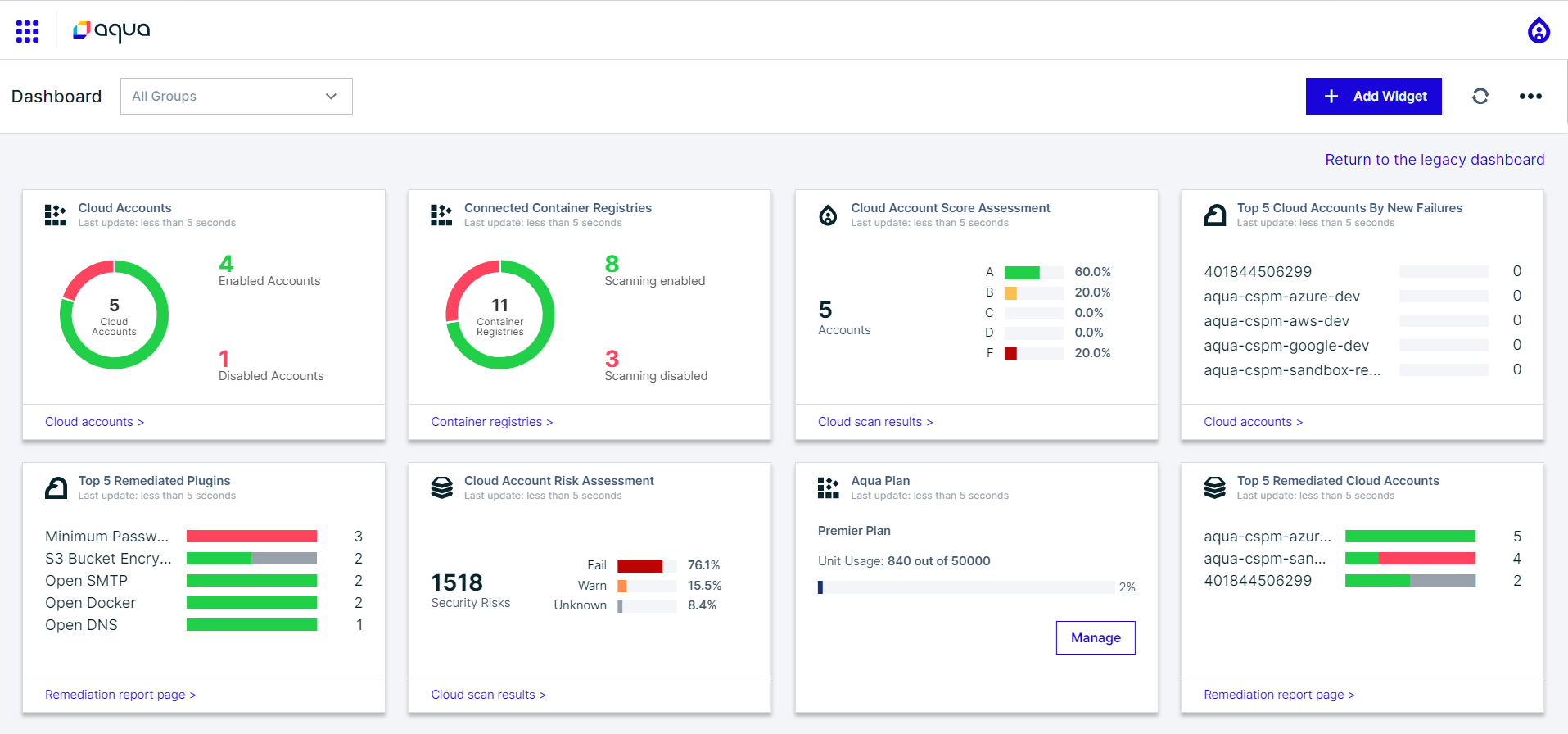
Source: Aqua Security
Aqua Security is used by leading companies such as PayPal, Adobe, GitLab, Microsoft, Cloudera, Bank Hapoalim, and Aviva, to name a few.
See More: Top 18 Azure DevOps Interview Questions in 2022
XebiaLabs
XebiaLabs is another popular software company that offers enterprise-scale DevOps and continuous delivery (CD) software tools. Its flagship product is ‘XL Release’, a release management tool that helps organizations automate and streamline their software release processes. Not only does it facilitate DevOps release automation, but it also ensures high transparency throughout the software development lifecycle.
XebiaLabs Dashboard
Source: XebiaLabs
Starting from establishing DevOps intelligence to ensuring increased deployment automation and release orchestration, XebiaLabs covers everything to improve the DevSecOps practices of medium to large enterprises. Some of its customers include Urban Science, MathWorks Inc, SoftTech, and Time Warner Cable.
See More: What Is PowerShell? Meaning, Working, Uses, and Advantages
Comparative Overview of Features Offered by Aqua Security and XebiaLabs
| Feature | Aqua Security | XebiaLabs |
| Container Security | Provides comprehensive container security by leveraging a combination of image scanning, runtime protection, and workload assurance features. | No native container security features but provides integration with third-party container security solutions. |
| Vulnerability Scanning | Conducts automated vulnerability scanning and remediation to identify and address potential security risks in applications and infrastructure. Aqua Security uses a combination of static analysis and dynamic scanning techniques to detect vulnerabilities in container images and runtime environments. | Offers vulnerability scanning capabilities through its Continuous Inspection (formerly XL TestView) product. |
| Compliance Management | Provides out-of-the-box templates for common regulatory standards, such as PCI-DSS and HIPAA, as well as customizable policies to help organizations achieve compliance. Aqua Security also offers compliance posture assessment and remediation capabilities. | XebiaLabs offers compliance management capabilities through its Continuous Inspection product. |
| Threat Intelligence | Offers a threat intelligence feed that integrates with Aqua Security’s image scanning and runtime protection capabilities to identify and block known threats. | No native threat intelligence capabilities but integrates with third-party threat intelligence feeds. |
| Runtime Protection | Provides real-time protection for containers and microservices through container runtime security policies and behavioral analysis. Aqua Security also offers network segmentation and encryption features to enhance runtime protection further. | No native runtime protection capabilities but provides integration with third-party runtime protection solutions. |
| Kubernetes Native | Aqua Security offers native support for Kubernetes, enabling organizations to secure cloud-native workloads and infrastructure. | XebiaLabs offers Kubernetes support through its XL Release and XL Deploy products. |
| CI/CD Integration | Aqua Security integrates with popular CI/CD tools such as Jenkins and GitLab to automate security testing and validation as part of the software development pipeline. | XebiaLabs provides native integration with popular CI/CD tools such as Jenkins, Bamboo, and TeamCity to enable end-to-end DevOps automation. |
| Multi-cloud Support | Aqua Security supports popular public cloud providers such as AWS, Azure, and Google Cloud Platform, as well as on-premise and hybrid environments. | XebiaLabs offers multi-cloud support for AWS, Azure, Google Cloud Platform, and other cloud providers. |
| Policy Enforcement | Aqua Security enables organizations to enforce security policies across the entire container lifecycle, from development to production. Policies can be customized based on organizational needs and can be automatically enforced at runtime. | XebiaLabs provides policy enforcement capabilities through its XL Release and XL Deploy products, enabling organizations to define and enforce deployment policies and rules. |
| Microservices Support | Aqua Security provides microservices-specific security capabilities such as service mesh visibility and container-to-container network encryption to help organizations secure their microservices architectures. | XebiaLabs supports microservices architectures through its XL Deploy and XL Release products, enabling organizations to deploy and manage microservices-based applications. |
| Machine Learning | Aqua Security uses machine learning algorithms to identify and respond to emerging threats in real-time, enhancing its threat detection and response capabilities. | No native machine learning capabilities but integrates with third-party machine learning solutions. |
See More: What is Root-Cause Analysis? Working, Templates, and Examples
Comparison Between Aqua Security and XebiaLabs
Let’s take a closer look at the features of Aqua Security and XebiaLabs.
1. Risk and vulnerability scanning
Aqua Security offers a dedicated advanced solution for risk and vulnerability scanning. It provides an impenetrable layer of security to cloud-native applications by minimizing the attack surface as required. It offers an end-to-end solution to scan, monitor, and detect vulnerabilities.
Vulnerability Scanning Feature of Aqua Security
Source Aqua Security
Aqua Security comes with an end-to-end solution to detect and reduce medium to high security risks, including embedded secrets, sensitive information breaches, and others, by having in-depth insights into the vulnerability posture. It can prioritize remediation per project requirements and mitigation scanning to minimize possible contextual risks.
XebiaLabs, on the other hand, comes with a compact solution vulnerability assessment. Be it in-depth risks and vulnerabilities monitoring or ensuring proper security adherence throughout the software delivery pipeline, it offers an all-in-one solution to take care of all these aspects.
XebiaLabs’s Security Risk Dashboard
Source: Screenshot Captured from XebiaLabs
XebiaLabs’s dedicated security risk dashboard for software releases helps automate the risk assessment process and reduce the risks throughout the software delivery pipeline. This dashboard merges automated risk assessment tools for software delivery pipelines with security and compliance data from widely-used tools such as Black Duck, Fortify, SonarQube, and Checkmarx.
While both XebiaLabs and Aqua Security offer dedicated risk and vulnerability scanning solutions, Aqua Security is the winner here since it offers a more competitive and in-depth solution.
2. Software supply chain security
Aqua Security stands out from the rest of DevSecOps tools for being equipped with an end-to-end software supply chain security solution for diverse industries. Its complete lifecycle software supply chain security provides a robust protection to all the crucial links in software supply chains.
Not only does it help minimize the attack surface, but it also ensures optimum code integrity to accommodate all the software supply chain security requirements of an organization. It also thoroughly verifies the integrity of the code artifacts throughout the pipeline while ensuring end-to-end transparency and security scanning in every phase of an application development cycle.
Another exclusive perk of using Aqua Security is that it helps secure the entire Dev environment for your software development lifecycle through the in-depth monitoring of the security postures of your DevOps tools.
XebiaLabs is also equipped with an end-to-end solution for software supply chain security solution that facilitates seamless integration with a broad range of DevOps tools and is completely optimized for data collection and security scanning & mitigation throughout the software supply chain.
Its expanded software chain of custody reporting capacity automates tasks related to development, security, compliance, and collaboration among DevOps teams throughout the software supply chain for highly secure processes and improved outcomes.
Aqua Security is the winner for providing a more advanced and better software supply chain security solution.
3. Advanced malware protection
Aqua Security comes with an advanced malware protection solution to analyze any possible dynamic threats and provide a highly secure critical sandbox layer for containers to remove any advanced malware or related threats.
Starting from every code entry point to the cloud, it helps expose advanced malware risks at the right time by pulling in the relevant external container images and determining their actions before risking the production environment. Furthermore, it has a dedicated solution to comply with the applicable container security standards. Be it protecting your containerized apps against potential attacks or reducing critical risks such as credentials theft, using containers for DDoS, or data theft, it ensures all of these with its compact solution.
XebiaLabs also has advanced malware protection to scan and detect sophisticated malware threats, which can be disguised for basic malware protection software and human users.
Its automated monitoring and isolation of such advanced malware help reduce a range of prominent and threatening advanced malware such as spear phishing, phishing, and ransomware. Starting from signature-based malware detection to sandboxing or behavior-based advanced malware detection, it offers a 360-degree solution for all.
Both Aqua Security and XebiaLabs have competitive advanced malware protection solutions.
See More: What Is Container Orchestration? Working, Importance, Challenges and Tools
Aqua Security vs. XebiaLabs: Which One to Choose
Both Aqua Security and XebiaLabs have their pros, cons, perks, and solutions. To unleash their full potential, it is recommended to assess your use cases and, based on the same and your industry/sector, choose the one that is a better fit.
Here are their top use cases, industries, and applications to help you make the right decision.
Aqua Security use cases:
- Scanning container images and registries for vulnerabilities and misconfigurations
- Enforcing security policies for containers and Kubernetes environments
- Protecting containerized applications against runtime threats and attacks
- Identifying and remediating security risks in cloud-native environments
- Integrating with DevOps tools to enable security throughout the CI/CD pipeline
- Providing visibility into container and application security posture
- Supporting compliance with regulations and standards such as PCI DSS and HIPAA
- Enabling secure development and deployment of microservices-based architectures
- Automating security assessments and compliance checks
- Protecting against insider threats and unauthorized access to containerized applications
Aqua Security use cases by industry/sector:
- Healthcare: Scanning container images and registries for vulnerabilities and misconfigurations in healthcare software, enforcing security policies for healthcare data, and protecting containerized applications against runtime threats and attacks.
- Financial services: Identifying and remediating security risks in banking and financial applications, supporting compliance with PCI DSS and other regulations, and integrating with DevOps tools to enable security throughout the CI/CD pipeline.
- Retail: Enforcing security policies for ecommerce applications, providing visibility into container and application security posture, and protecting against insider threats and unauthorized access to containerized applications.
- Manufacturing: Protecting containerized applications against runtime threats and attacks in manufacturing software, integrating with DevOps tools to enable security throughout the CI/CD pipeline, and providing visibility into container and application security posture.
- Government: Supporting compliance with government regulations and standards such as NIST and FISMA and protecting containerized applications against runtime threats and attacks in government software.
XebiaLabs use cases:
- Automating application delivery pipelines
- Orchestrating complex release processes across multiple teams and technologies
- Integrating with various DevOps tools and technologies to enable end-to-end automation
- Providing real-time visibility into release status and metrics
- Enforcing compliance and security policies throughout the release process
- Enabling faster feedback loops and continuous improvement through feedback and analysis
- Streamlining and automating manual processes, reducing manual errors and delays
- Supporting deployment to multiple environments, including on-premise, cloud, and hybrid environments
- Providing an audit trail of all changes made during the release process
- Enabling self-service capabilities for development teams, allowing them to manage their releases
See More: Top 10 CI/CD Tools in 2022
XebiaLabs use cases by industry/sector:
- Financial services: Automating application delivery pipelines for banking and financial applications, enforcing compliance and security policies for financial data.
- Healthcare: Orchestrating complex release processes for healthcare applications, supporting compliance with HIPAA and other regulations, and providing real-time visibility into release status.
- Retail: Enabling faster feedback loops for ecommerce applications, providing self-service capabilities for development teams, and supporting deployment to multiple environments, including on-premise and cloud.
- Manufacturing: Streamlining and automating manual processes in manufacturing software, supporting deployment to hybrid environments, and providing an audit trail of all changes made during the release process.
- Telecommunications: Integrating with various DevOps tools and technologies for telecommunication applications, providing real-time visibility into release status and metrics, and enabling self-service capabilities for development teams.
Did this article help you understand the comparative features of Aqua Security and XebiaLabs? Which DevSecOps tool would you prefer among these? Let us know on Facebook, Twitter, and LinkedIn. We’d love to hear from you!
MORE ON DEVOPS
Image source: Shutterstock

